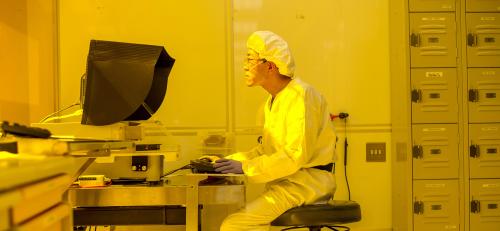University funding is under siege. Traditional sources aren’t keeping pace with staffing, teaching, and research costs. Inflation-adjusted federal funding for university research has fallen every year since 2011, the longest multiyear decline on record (with the exception of recent funding increases for the National Institutes of Health). Few expect government investments to increase any time soon, and, after three decades of tuition costs rising faster than inflation, students and families are increasingly tapped out.
Given the pressure around traditional funding sources, new financing is the name of the game for most universities, and commercializing research, or “technology transfer,” has moved to the top of the list. The Bayh-Dole Act of 1980 first established that universities were allowed to profit off of federally funded research by selling or licensing research discoveries to companies. Essentially, the act created a universal patenting policy among federal agencies that allows universities to retain the title to inventions. In 2002 The Economist referred to the act as “perhaps the most inspired piece of legislation to be enacted in America over the past half-century.” Since then, blockbuster successes like Northwestern University’s $1 billion windfall in royalties from Pfizer for Lyrica, its anti-seizure drug, have whet the appetites of university chancellors looking for their own golden geese.
But traditional technology transfer, for the most part, has been a failure. Though some universities have hit it big, success stories are rare—colleges often refer to them as “unicorns.” In fact, Brookings scholar Walter Valdiva has found that most schools don’t even earn enough from their licensing revenue to cover the operating costs of their small technology-transfer offices.
Is Bayh-Dole done? Not at all—it just needs to be improved in the following ways for the modern economy.
First, licensing is only one avenue for attracting revenue from scientific discovery. Creating research-based startups, industry-specific workforce curricula, industry-sponsored research, and in certain cases technology consulting are all opportunities to attract new sources of revenue. Patenting and licensing work only for a small number of technology categories, and that’s one reason so few universities are successful at it. On the other hand, technology transfer can be democratized to lower-tier research universities and non-research colleges and universities through technical assistance outside of patenting.
Second, traditional tech transfer begins once the research outcomes are complete, which is far too late in the process. Typically, a school’s tech-transfer office scours research activities for successful outcomes and then tries to find a customer in the private sector. In other words, universities have solutions in pursuit of problems—a terrible way to manage R&D. Instead, universities need to act like companies and streamline research portfolios around commercial goals. Tech transfer officers should be involved early, when researchers are applying for funds, and department chairs should push faculty to apply for grants that have commercial or industry outcomes baked into the grant. Doing so would keep everyone on the same page and create incentives to link with companies early in the research lifecycle.
Third, tech transfer is too inward focused, seeking invention disclosures and patents (which are inputs, not outputs, to commercialization) when corporate partnerships should be the main goal. What is constraining the successful commercialization of research is not the quality of the research or the intellectual property that protects it, but rather university relationships with firms. Companies don’t understand how universities work, and firms get frustrated when schools don’t move with the speed of the other providers in the supply chain. Even the best academic licensing agreements are insufficient to overcome this disconnect. Instead, repeated positive engagements with particular departments and faculty drive firms to come back to the bargaining table. Developing these partnerships is essential, but in most schools the job is delegated to a corporate engagements officer with little expected from the faculty.
Finally, universities, particularly urban universities, exist not in a vacuum but within larger economies. As I’ve written elsewhere, successful technology transfer is less about the expertise of a university and more about the regional economy. Research shows that knowledge transfer occurs best over city blocks, not across the country. A second-tier design school can have far greater success working with a strong local industry than can a top-tier mechanical engineering department seeking transatlantic partnerships. Universities need to understand the economies in which they are located and create flexibility within their commercialization efforts to impact their regional economies (and bottom lines). But many universities simply carbon-copy their tech transfer offices off of top global universities like Stanford or MIT. These schools do have the ability to leverage global corporate relationships on a consistent basis—though even they have a strong local presence—but most universities don’t. The reality is that every school can establish a strong partnership with the private sector if it takes an interest in its region.
Acting on these recommendations will take more work than traditional technology transfer efforts, but the opportunities for reward are immensely more plentiful, and often just a short drive or a subway stop away.
The Brookings Institution is committed to quality, independence, and impact.
We are supported by a diverse array of funders. In line with our values and policies, each Brookings publication represents the sole views of its author(s).









Commentary
Technology Transfer 2.0: Finding economic value in university R&D
June 7, 2016